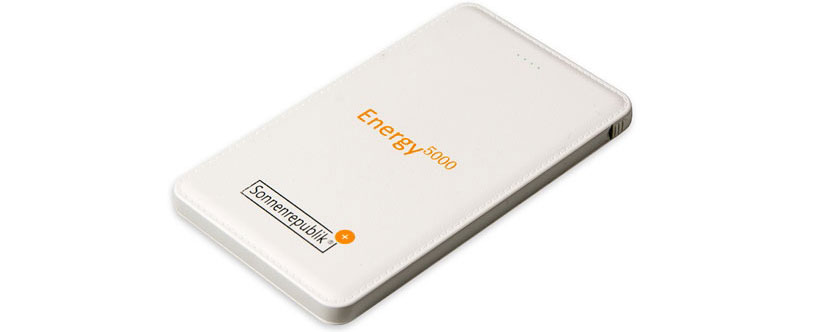Applications
Working Outside
Work outdoors with solar chargers, MacBook, Tablet, etc.
If you enjoy working in the fresh air with MacBooks or iPads, you’ll eventually need a free power outlet within reach. Alternatively, you can combine a solar charger with a power bank and remain truly independent..

Solar chargers with sufficient power for laptops and tablets have been inconvenient up to now, and thus only an alternative to the plug-in power supply for dedicated solar techies. However, this has changed now that affordable high-performance solar cells are available. Current folding solar chargers with the necessary power for outdoor work weigh a few hundred grams, fit into small bags and already offer charging currents that correspond to a conventional iPad plug-in power supply.
The same applies to power banks. Mobile batteries with sufficient capacity and electrical output along with the matching connectors for tablet and notebook are smaller than a paperback book and ensure a reliable power supply even when the sun is not shining.
Size, Weight and Performance
Folding chargers with enough power for a laptop or a tablet must only be opened during use and take up only half (or less) of the usable module surface in the luggage.
Our Wing12 is approx. 15 x 26 x 2.5cm (folded), weighs 380 g and has an output power of up to 2A. Thus, an iPad Air 2 with its battery of 7.3 Ah is charged as comfortably in full sunlight as it would be with a power outlet (approx. 54 hours). If you need less power and only want to charge a mobile phone, for example, you can grab the even smaller Wing6, which fits in a pocket.
Furthermore, a conventional USB 2.0 port on a PC only delivers a maximum charging current of 0.5A, the newer USB 3.0 standard a maximum of 0.9A. So compared to a USB port, a solar charger like the Wing12 is more than twice as powerful.
Choice of Material
Until now, solar chargers had only plastic cases or were sewn into cheap polyester textiles. For those who prefer a natural material and value individual design, we now offer our chargers with Portuguese natural cork as the outer material. It endures almost all stresses and strains that can occur by daily use. Only for extreme outdoor requirements would we recommend our Cordura (nylon) variant.
Never the less the natural material is high quality, looks stylish, and is environmentally friendly. Currently we are the only suppliers to manufacture solar chargers with an outer material made of natural cork. Moreover our invisibly integrated glass fibre reinforcements improve the stability.
But not only the outer material is important, the film on the solar cell side must both protect it and allow as much sunlight as possible to pass through. This is why our Wing12 solar chargers have a specially structured protective layer of fluoropolymer, which is extremely resistant and durable and yet does not impair the performance of the devices. Other suppliers commonly use the much cheaper PET, which turns yellow after a few years when used regularly.

Power bank and PowerBooster for reliable charging currents
A solar charger and a power bank are the ideal combination for working outdoors. The power bank can be charged by solar energy if the device is already full or when the solar intensity isn’t enough to charge the device directly. It can also be used as an energy source at night or at low light intensity.
Another advantage: many mobile phones, tablets and other devices require a minimum charging current. For example, the iPhone needs approx. 400mA, the iPad approx. 800mA. This means that when the sunlight intensity is weaker, a conventional solar charger may not meet the threshold and the power output will be interrupted. A power bank can temporarily store this energy and thus ensure a higher charging current when it is actually needed.
The patented Sonnenrepublik PowerBooster goes even further: its technology increases the charging current of the solar charger to up to 1.5A, thus ensuring stable and low-loss charging of USB terminals.
Another less sensible way of dealing with the “minimum charging current problem” is to be found with many cheap solar chargers and is often described with terms such as “Smart Power Chip.” Here only the current below 400mA is completely separated. This results in no current flow, even though considerable amounts of energy are lost.

 Deutsch
Deutsch